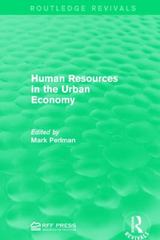Question
I only need the answers, no need for an explanation! These questions are about Inflation, Deficit and Debt. If nominal GDP is $636 billion and
I only need the answers, no need for an explanation!
These questions are about Inflation, Deficit and Debt.
If nominal GDP is $636 billion and the velocity of money is 4, the:
A Average level of prices is $170 billion
B Consumer price index is 340
C Money supply is $636 billion
D Money supply is $159 billion
If M is $600, P is $2, and Q is 900, then:
A Aggregate expenditures will be $960,000
B Aggregate expenditures will be $5,400
C V must be 3
D V must be 1.5
If the amount of money in circulation is $6 billion and the value of total output is $30 billion in an economy, the:
A Velocity of money is 5
B Money supply is $36 billion
C Level of the price index is 320
D Equilibrium level of GDP is $180 billion
Assume the velocity of money is stable and the economy is operating at full employment, the equation of exchange predicts that a rise in the money supply will:
A Decrease nominal GDP
B Increase real output
C Increase interest rates
D Increase prices
According to the equation of exchange, a decrease in the money supply is likely to
A Reduce interest rates
B Increase the velocity of money
C Increase holdings of liquid assets
D Increase bond prices
According to the equation of exchange, if the velocity of money and the quantity of goods and services do not change, a(n):
A Increase in the money supply will increase the price level
B Decrease in the money supply will increase the price level
C Decrease in the money supply will have no effect on the price level
D Increase in the money supply will decrease the price level
If an economy experiences a high rate of inflation, they are likely to experience a:
A low rate of growth of nominal GDP.
B decrease in nominal wages.
C low nominal interest rate.
D high nominal interest rate.
In macroeconomics, the term "crowding out" refers to
A A decrease in the supply of money and an increase in the velocity of money
B Deficit financing by the government which increases interest rates and reduces private investment
C The inverse relationship between the supply of money and nominal GDP
D An increase in the supply of money and a decrease in the velocity of money
The implications of the "crowding out" effect suggest that
A consumer and investment spending always vary inversely.
B it is very difficult to have excessive aggregate supply in our economy.
C increases in government spending financed through borrowing will increase the interest rate and thereby reduce investment and consumption.
D tax increases are paid primarily out of saving and therefore are not an effective fiscal device.
The actual significance of public debt relative to the economy should be understood by
A Comparing it to the value of exports and imports
B Dividing it by the social security trust fund
C Multiplying it by the size of the population
D Measuring it as a percentage of GDP
Which is an important problem associated with public debt?
A Payments on interest on the debt lead to greater income inequality
B Interest payments on the debt tend to improve economic incentives to work and produce more unemployment
C Government borrowing to finance the debt may increase the level of private investment
D Payment of interest on the debt reduce the amount of money that can be spent on other needs
Just a reminder that I only need the answers, no explanation!
Step by Step Solution
There are 3 Steps involved in it
Step: 1

Get Instant Access to Expert-Tailored Solutions
See step-by-step solutions with expert insights and AI powered tools for academic success
Step: 2

Step: 3

Ace Your Homework with AI
Get the answers you need in no time with our AI-driven, step-by-step assistance
Get Started


